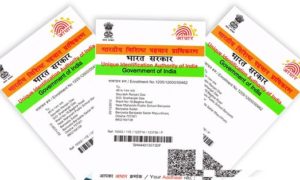The price of taking out a personal loan from a lender is its interest. It acts as a charge for the right to use the resources held by the bank. Throughout the loan term, the remaining loan balance is used to compute this interest.
Also Read– Good News For HDFC Customers! Home Loan Interest Rates Lowered For THIS Tenure – Read Details
This can be explained as follows:
In percentage terms: An annual percentage rate (APR) is a common way to represent the interest rate on a personal loan. Included in the APR are the base interest rate as well as any other costs.
Varying based on the subsequent elements: Depending on your creditworthiness, the size and duration of the loan, and the lender’s restrictions, your interest rate may change. Generally speaking, interest rates are lower for borrowers with better credit scores and shorter loan terms.
How interest on a loan works
The interest on personal loans is frequently amortised. This implies that each month, interest is computed on the outstanding loan balance. As a result, when the principal is lowered later in the loan term, you pay less interest and more interest early on in the loan’s life.
Borrowers can visualise interest on a personal loan in two ways:
Simple interest (Estimation): This straightforward approach works on the assumption that interest is only charged on the initial loan balance. It can be used as a general estimate even though it is not very accurate.
Although this method is easier to compute, it only looks at the original loan amount and ignores the debt that decreases over time. This is the equation:
Interest = Principal x Rate x Time
where
Principal: The amount of money borrowed
Rate: The loan’s annual interest rate
Time: The loan’s term
Amortised interest (More accurate): This approach gives you a more realistic estimate of the total amount of interest you will pay by taking into account the loan balance that is decreasing. Using an online loan calculator or a financial calculator is the ideal way to apply this strategy.
Use a financial calculator or an online loan calculator as it is more difficult to calculate by yourself A personal loan EMI calculator is a useful online tool that helps you estimate the equated monthly installment (EMI) payment for a personal loan. It takes into account three key factors:
Loan amount: The total amount of money you borrow from the lender.
Interest rate: The APR imposed by the lender, which includes both the base interest rate and any additional costs.
Loan tenure: The total number of months or years for which you borrow money.
When you enter these facts into the calculator, it runs a sophisticated mathematical computation to compute your EMI. This method takes into account amortised interest, which means it accounts for the loan’s declining balance over time.
The amortisation schedule in the following illustration explains how one repays amortised interest on a personal loan sought. Assume that you have availed of a personal loan amounting to ₹1,00,000 for 12 months at 10.5% interest.
Read More: How to manage your personal loan efficiently? Here are 5 best ways
| Period | EMI | Interest | Principal | Balance |
| 0 | ₹100000.00 | |||
| 1 | ₹8814.86 | ₹875.00 | ₹7939.86 | ₹92060.14 |
| 2 | ₹8814.86 | ₹805.53 | ₹8009.33 | ₹84050.81 |
| 3 | ₹8814.86 | ₹735.44 | ₹8079.42 | ₹75971.39 |
| 4 | ₹8814.86 | ₹664.75 | ₹8150.11 | ₹67821.28 |
| 5 | ₹8814.86 | ₹593.44 | ₹8221.42 | ₹59599.86 |
| 6 | ₹8814.86 | ₹521.50 | ₹8293.36 | ₹51306.49 |
| 7 | ₹8814.86 | ₹448.93 | ₹8365.93 | ₹42940.57 |
| 8 | ₹8814.86 | ₹375.73 | ₹8439.13 | ₹34501.43 |
| 9 | ₹8814.86 | ₹301.89 | ₹8512.97 | ₹25988.46 |
| 10 | ₹8814.86 | ₹227.40 | ₹8587.46 | ₹17401.00 |
| 11 | ₹8814.86 | ₹152.26 | ₹8662.60 | ₹8738.40 |
| 12 | ₹8814.86 | ₹76.46 | ₹8738.40 | ₹.00 |
| Source: HDFC Bank Website (As of June 06, 2024) | ||||
Frequently Asked Questions (FAQs)
Q. How can personal loan EMIs be paid?
There are several simple ways to pay your personal loan EMIs in India:
National Automated Clearing House (NACH) or Electronic Clearing Service (ECS): This popular choice involves telling your bank to deduct the EMI amount from your linked savings account on the due date automatically. This reduces the possibility of missing payments and late fines while guaranteeing timely payments. By utilising the online banking interface or completing a mandate form at your local bank branch, you can set up ECS/NACH.
Standing Instructions (SI): Standing instructions let you plan automatic transfers from your savings account to your loan account on the due date. They work similarly to ECS/NACH. This service is typically provided by your bank, and you can visit a branch or use net banking to activate it.
Online banking: Using their online banking platforms, a lot of banks let their clients make instant loan payments. On or before the loan due date, you can move money from your savings account to your loan account.
Mobile banking apps: You can conveniently pay your loan EMIs with the help of banks’ mobile banking apps. To make a payment using your debit card or account balance, select the loan account after logging into your mobile banking app.
Debit card payment: Direct EMI payments with a debit card are accepted by certain lenders. You can use the lender’s mobile app or web portal to do this. Verify that there is sufficient money in your debit card account to cover the EMI amount.
Payment by cheque: Although less popular these days, you can still pay your EMIs by cheque, either in person at the lender’s branch or by mail to the address provided. To avoid late fines, start the check payment well in advance of the due date as this option is slower and may result in processing delays.
Cash payment: In rare circumstances, certain lenders might take EMI payments in cash at their branches. However, due to security issues and the absence of a payment receipt, this option is not advised.
Q. How do you decide on the right method to repay your loan EMIs?
Selecting the appropriate method for repaying your personal loan EMIs hinges on various factors, and the optimal choice may entail a blend of methods tailored to your circumstances. Below is a breakdown of the primary considerations:
Taking convenience into account: Choose the method that best fits your interests and way of life. Since they can be accessed at any time and from any location, online and mobile banking options are the most practical.
Priority on timeliness: If you have trouble remembering deadlines, automatic payment systems like ECS/NACH or standing orders help you make payments on time and avoid penalties for being late.
Pay attention to security: Use a reliable device and a secure internet connection when making online payments to lower the chance of fraud.
It is best to inquire about recommended EMI payment options from your lender. Payment methods should be clearly stated on their website or mobile app.
Q. What are some ways to decrease your personal loan EMIs?
Lowering your personal loan EMIs can enhance your cash flow and potentially expedite your journey to debt freedom. Here are a few approaches you might contemplate:
Only borrow what you need: This may seem simple, but EMIs and total interest costs are decreased when you only borrow what is necessary.
Seek loan transfer: Transferring your existing loan to a new lender with a lower interest rate is included in the balance transfer process. You can reduce your EMI significantly if you are eligible for a better contract. But keep an eye out for any associated administrative costs and make sure the transfer generates a profit.
Keep your credit score high: A high credit score makes it possible for you to get a better rate on a balance transfer or to bargain with your current lender for a lower interest rate.
Extended tenure: Lower EMIs are the outcome of selecting a longer loan tenure. But, over the course of the loan, this strategy necessitates paying higher interest. Only consider this if your current EMI significantly strains your finances.
Lump sum payment: One option to pay off your loan principle quickly is to make a lump sum payment if you have surplus funds. This lowers the amount that is still owed, which, depending on your lender’s policies, may lead to lower future EMIs and reduced interest expenses.
Part-payments: Over time, even modest, consistent prepayments can have a big impact. Find out about the terms of partial prepayments from your lender, including any associated costs.
Q. Can you use the online loan calculator to calculate the interest amount on any kind of loan?
Any bank or financial institution’s personal loan amortisation EMI can be calculated using the calculator. You are not required to obtain a personal loan from any specific bank or lending organisation, and the service is free.





































